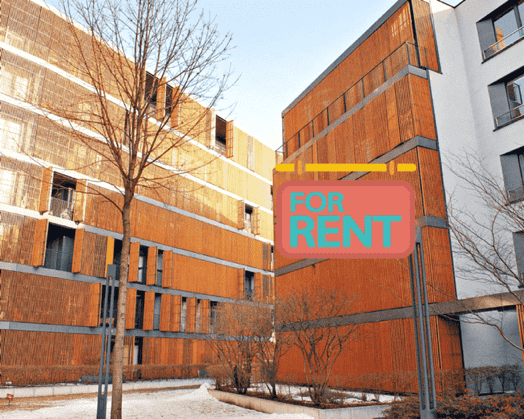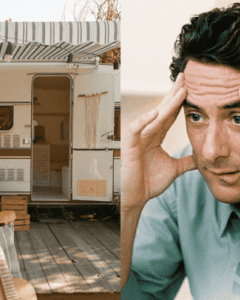The Dark Side of Renting Apartments: Challenges Faced by American Investors
In the realm of commercial real estate, apartment buildings have long been hailed as "basement shelters" in the United States. These properties have traditionally been considered a safe investment, boasting stable rent increases and promising profit prospects. However, the landscape is rapidly changing, and investors are facing unexpected hurdles that have left them disillusioned and anxious.
In the realm of commercial real estate, apartment buildings have long been hailed as "basement shelters" in the United States. These properties have traditionally been considered a safe investment, boasting stable rent increases and promising profit prospects. However, the landscape is rapidly changing, and investors are facing unexpected hurdles that have left them disillusioned and anxious.

Unlike office buildings or commercial centers, the demand for rental apartments in the US remains consistently high, with rents skyrocketing since 2020. Yet, the true challenge lies not in the demand, but rather in the soaring interest rates plaguing the market. The sudden surge in borrowing costs has thrown many building owners into a state of financial distress, jeopardizing their ability to meet mortgage payments and maintain their investments.
Data from CoStar, a leading information and analytics firm, reveals that the value of apartment buildings dropped by a staggering 14% in the year ending June, after experiencing a remarkable 25% growth the previous year. While mortgage debt in this sector may still be relatively low, its growth is alarming. Borrowing costs have doubled, rent growth has slowed, and construction costs have escalated, creating a precarious situation for investors.
A worrisome report by Trepp, a data provider, indicates that rental debt now constitutes a significant portion of commercial mortgages at risk of default. The Mortgage Bankers Association further stipulates that unpaid apartment building-related mortgages have more than doubled over the past decade, reaching approximately $2 trillion. Shockingly, this amount is nearly twice as much as the debt related to office buildings. Compounding this issue is the fact that approximately $980.7 billion of apartment building-related debt is due between 2023 and 2027.
While the focus of attention in the real estate sector seems to gravitate towards office buildings, the colossal problem of default risks in the apartment building market has largely gone unnoticed. Cities such as Los Angeles, Houston, and San Francisco are witnessing a surge in apartment building owners defaulting on their mortgages, with even industry giants like Blackstone, the world's largest asset management company, experiencing mortgage payment defaults on 11 apartment buildings in Manhattan.
Historically considered a lower-risk real estate investment in the US, apartment buildings have proven resilient even during the recession and financial crisis of 2008-2009. The universal need for housing and the potential for inflation to drive rental prices upwards have attracted investors seeking to maximize the value of their buildings. As a result, rents surged by an astounding 25% within an 18-month period, from 2021 to 2022, enticing many investors to purchase at premium prices.
However, a significant number of apartment building owners borrowed heavily, often exceeding 80% of their property's value. While most loans for these acquisitions were long-term fixed-rate mortgages, the pandemic saw a shift towards floating-rate loans with shorter terms. Many owners sought to raise rents, aiming to sell their properties swiftly or refinance their debts. Unfortunately, few anticipated the rapid surge in interest rates, leading to plummeting building values and exorbitant loan repayments.
Tides Equities, a prominent investor, embarked on a purchasing spree of over $6.5 billion in rental properties since 2016, predominantly in low- and middle-income apartment buildings in southwestern US cities. The company anticipated increasing rents by a staggering 44% over three years in a suburban Dallas building in 2021. However, in June of the same year, Tides admitted that their strategy had not gone as planned, as tenants struggled to make ends meet. The dwindling profits generated by some properties could no longer cover their debts, potentially forcing Tides and its investors to allocate additional funds to avoid foreclosure.
While most analysts expect housing shortages and high rental prices to persist, a decrease in interest rates could lead to a swift rebound in real estate prices across the US. In such a scenario, owners with fixed-rate mortgages would likely weather the storm. However, it is crucial to acknowledge that other hidden risks still loom on the horizon. The number of new apartment buildings set to enter the market this year and the next is projected to be unusually high, particularly in the higher end of the rental spectrum. This surge in supply raises concerns about potential oversaturation and the subsequent impact on property values.
The once-reliable haven of apartment buildings for American investors now presents unforeseen risks and challenges. The allure of stable rental income and the potential for significant profit gains have lured many into this sector. However, the exorbitant interest rates and the specter of mortgage defaults have shattered their dreams of financial security. As the commercial real estate market navigates the complex dynamics of this paradigm shift, it is essential for investors to tread carefully, understand the evolving risks, and explore alternative strategies to safeguard their investments.
The Dark Side of Renting Apartments: Challenges Faced by American Investors
Growing Trend: Seniors Preferring to Age in Home, CMHC Report Finds
Aging in place is becoming increasingly popular among Canadian seniors, as revealed by the CMHC report. Find out why more seniors are choosing to stay put in their homes.
Aging in place is becoming increasingly popular among Canadian seniors, as revealed by the CMHC report. Find out why more seniors are choosing to stay put in their homes.
Read moreShocking Truth: Canadians Trapped in a Vortex of Personal Finance Stress
Recent survey data from Edward Jones Canada suggests that most Canadians are struggling with finances, and it’s impacting their quality of life.
Recent survey data from Edward Jones Canada suggests that most Canadians are struggling with finances, and it’s impacting their quality of life.
Read moreMortgage Payments Increasing: What Should You Do?
Facing higher monthly payments due to mortgage payments increasing? Canadian homeowners must decide between renewal or refinancing of their home loan. Find out what you should do.
Facing higher monthly payments due to mortgage payments increasing? Canadian homeowners must decide between renewal or refinancing of their home loan. Find out what you should do.
Read moreIncome Gap Widens: Americans Must Earn $40,000 Above Average to Buy a Home in 2023
According to new data from Redfin, Americans must now earn $40,000 above average to afford a home in 2023. This represents a significant increase in the income gap and highlights the challenges faced by potential homebuyers.
According to new data from Redfin, Americans must now earn $40,000 above average to afford a home in 2023. This represents a significant increase in the income gap and highlights the challenges faced by potential homebuyers.
Read moreWarning: The Disturbing Rise of 'Living for the Moment' Culture in US society
Discover the alarming trend of the 'Living for the Moment' culture in US society. Explore how extravagant spending impacts the economy despite financial uncertainties. Read more to understand the implications.
Discover the alarming trend of the \'Living for the Moment\' culture in US society. Explore how extravagant spending impacts the economy despite financial uncertainties. Read more to understand the implications.
Read moreRising Trend of Converted Vehicles: A Solution to UK's Housing Crisis
Discover the rising trend of converted vehicles as a creative solution to the UK's housing crisis. Explore how DIY home projects, such as transforming horseboxes, lorries, and buses, offer independence and cost-saving benefits amidst a shortage of affordable housing options.
Discover the rising trend of converted vehicles as a creative solution to the UK\'s housing crisis. Explore how DIY home projects, such as transforming horseboxes, lorries, and buses, offer independence and cost-saving benefits amidst a shortage of affordable housing options.
Read moreRevealing UK Supermarkets' Shocking New Security Measures for Shoppers
Find out about the shocking new security measures in UK supermarkets, including receipt requirements and bag checks. Will this become the new norm for grocery shopping? Stay informed.
Find out about the shocking new security measures in UK supermarkets, including receipt requirements and bag checks. Will this become the new norm for grocery shopping? Stay informed.
Read moreHousing Affordability Crisis: Interest Rates Soar Above 7%, American Millennials Struggle to Buy Homes
As interest rates reach their highest levels in 21 years, housing affordability plummets for Millennials. The American dream of home ownership becomes increasingly out of reach, impacting wealth creation and financial stability.
As interest rates reach their highest levels in 21 years, housing affordability plummets for Millennials. The American dream of home ownership becomes increasingly out of reach, impacting wealth creation and financial stability.
Read moreCanadian Homeowners in a Financial Dilemma: Renting vs. Owning Amid Rising Interest Rates
Delve into the financial dilemma faced by Canadian homeowners amidst the Bank of Canada's decision to maintain elevated interest rates. Explore the potential implications, such as increased rental demand and higher rents, exacerbating affordability concerns. Stay informed with our comprehensive analysis.
Delve into the financial dilemma faced by Canadian homeowners amidst the Bank of Canada\'s decision to maintain elevated interest rates. Explore the potential implications, such as increased rental demand and higher rents, exacerbating affordability concerns. Stay informed with our comprehensive analysis.
Read more













